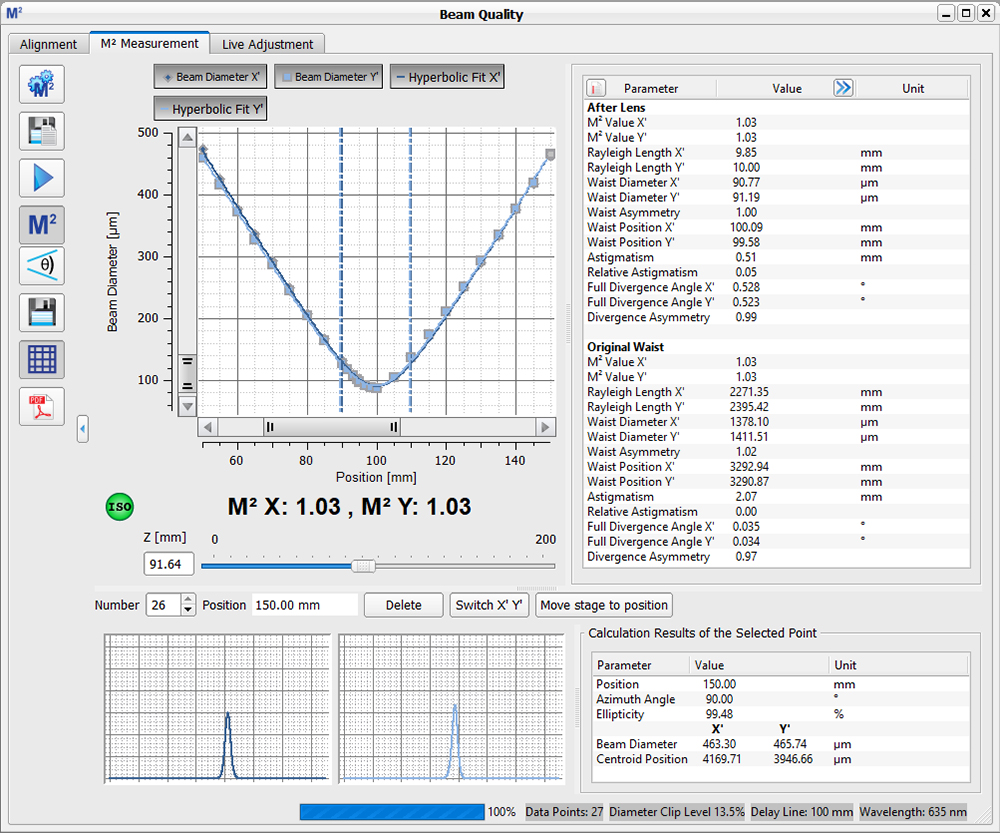Contents

Source: ResearchGate
<>
The M2 Factor in Laser Beam Quality
The M2 factor (M squared factor) is a crucial measure of the beam quality of a laser beam. It is defined as the beam parameter product divided by the diffraction-limited Gaussian beam parameter product at the same wavelength. In simpler terms, it quantifies how close a laser beam is to being diffraction-limited.
Understanding the M2 Factor
A diffraction-limited beam has an M2 factor of 1 and follows a Gaussian beam profile. The M2 factor plays a significant role in determining how tightly a laser beam can be focused for a given divergence angle, which is often influenced by the numerical aperture of the focusing lens.
For non-circularly symmetric beams, the M2 factor can vary for different directions orthogonal to the beam axis. This is especially evident in diode bar outputs, where the M2 factor differs significantly between the fast and slow axes.
Calculating the M2 Factor
The M2 factor can be calculated based on the evolution of the beam radius along the propagation direction, known as the caustic. ISO Standard 11146 provides guidelines for accurately determining the M2 factor, including rules for defining the beam radius and fitting procedures.
It’s important to note that while the M2 factor provides a convenient single value for quantifying beam quality, it may not capture all details relevant to a specific application’s requirements.
Errors in M2 Factor Measurements
Common mistakes in M2 factor measurements can lead to inaccurate values. These errors include imprecise beam radius measurements, focusing the beam too tightly, improper background subtraction, and insufficient distance from the beam focus for measurements.
Further Insights
By understanding the M2 factor, researchers and engineers can predict the beam radius evolution and optimize laser systems for various applications. Improving measurement techniques and adhering to standards like ISO 11146 are essential for accurate M2 factor determination.

Source: Thorlabs
Feel free to comment your thoughts.



